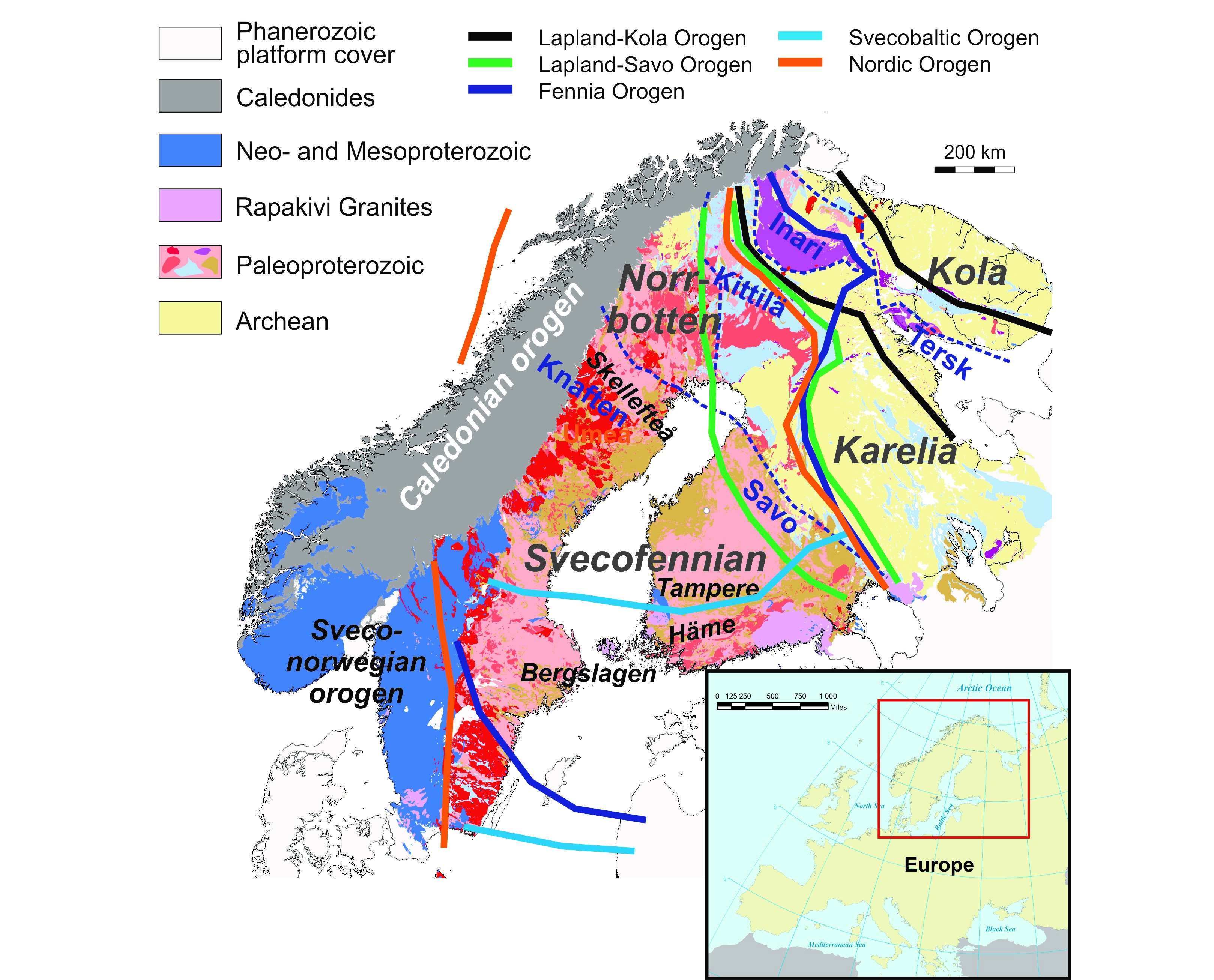Finland occurs in the center of Fennoscandia where the Archean crust with Paleoproterozoic cover sequences dominate in the east (Kola, Karelia and Norrbotten domains), the Paleoproterozoic crust occupies the central part (Svecofennian domain), and the Meso- to Neoproterozoic rocks are found in the southwest (e.g. Sveconorwegian orogen; Fig. 1). Characteristic features of the lithosphere in Finland include Paleoarchean age of the lithospheric mantle under Archean and exceptionally thick crust (≥60 km) and lithospheric mantle at the boundary of the Archean and Proterozoic domains.
Archean in Finland comprises the Meso to Neoarchaean TTG-greenstone provinces with earliest rock ages at 3.6 Ga. Major orogenic assembly via accretion to collisional stacking occurred during 2.83–2.68 Ga (Lopian orogeny) and occurrences of orogenic gold deposits are abundant along the major greenstone belts (e.g. Ilomantsi, Kuhmo-Suomussalmi and Oijärvi belts).
Pre-assembly of Archean continental fragments of Fennoscandia prevailed in neutral to extensional settings from 2.5 Ga to ca. 2.1 Ga. Large-scale mantle plume event initiated at 2.1 Ga in the present western margin of the Karelian domain, which triggered continental breakup at 2.06 Ga. Arc magmatism started at 2.0 Ga (e.g. in the Kittilä and Inari-Tersk Arcs in northern Finland, Knaften arc in northern Sweden, Savo arc in central Finland) followed by onset of accretion at 1.94–1.92 Ga. Voluminous arc magmatism at 1.90-1.88 Ga characterizes the Svecofennian domain (e.g. Skellefte, Tampere, Häme and Bergslagen arcs) and marks the most prominent crustal forming event at present crustal level.
The main Paleoproterozoic orogenic evolution of Fennoscandia has been divided into the Lapland-Kola (1.94–1.86 Ga) and the composite Svecofennian (1.92–1.79 Ga) orogenies; the latter one consists of the Lapland-Savo, the Fennian, the Svecobaltic and Nordic orogens (Fig. 1). Locations of Paleoproterozoic orogenic gold deposits are controlled by the transpressional-transtensional crustal-scale faults and thrusts along these orogenic fronts. Re-activation of the major fault systems in the older parts of the Lapland-Kola and Svecofennian orogens during the final stages of the Svecofennian evolution (continent-continent collision to the south and west) also had importance in the formation of orogenic gold deposits.
Younger orogenies (e.g. the Sveconorwegian and Caledonian orogenies) in Fennoscandia, west and southwest of Finland (Fig. 3), may also have had far-field effects causing fluid flow and local redistribution of existing gold enrichments.
(Last update: 20.05.2020)
